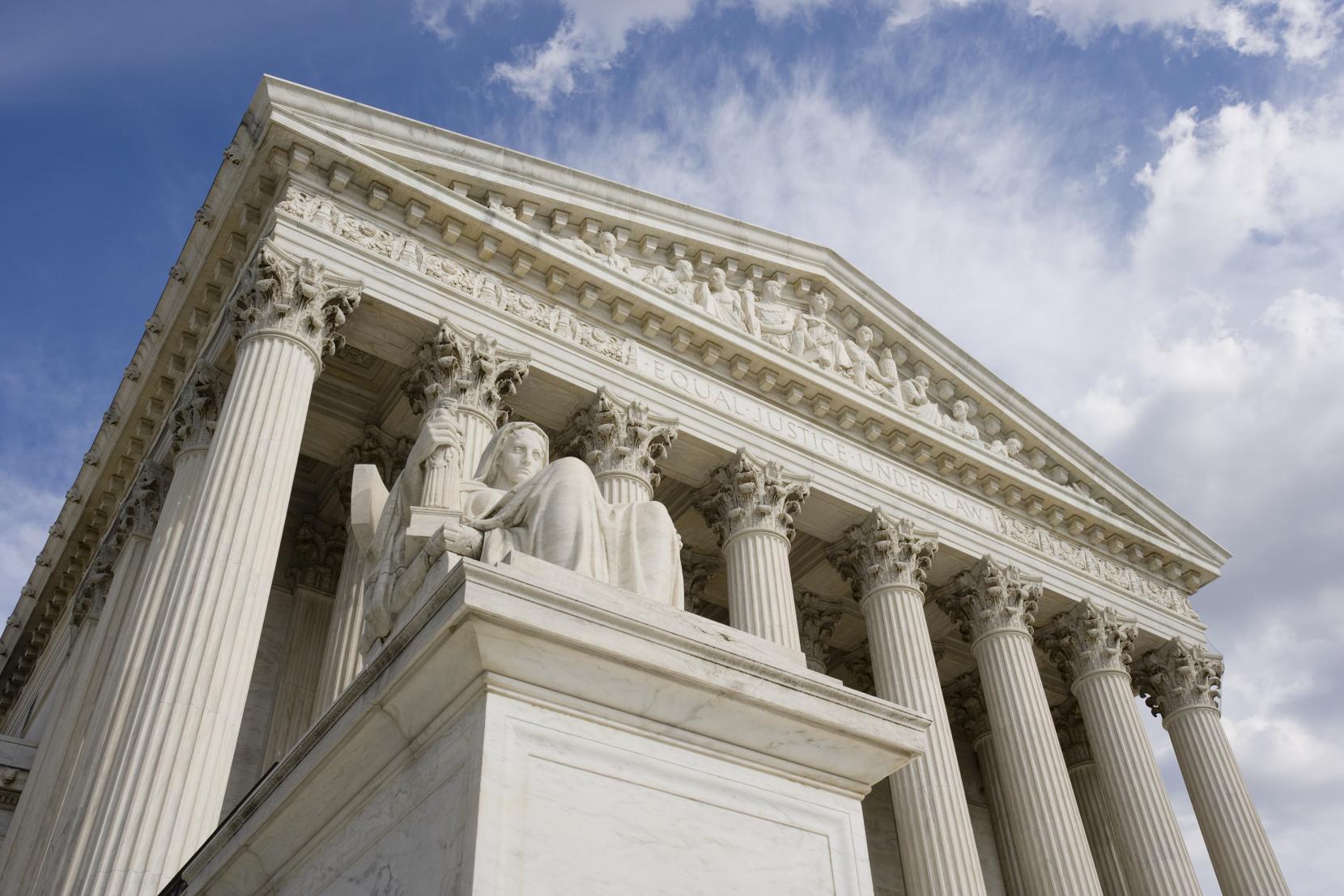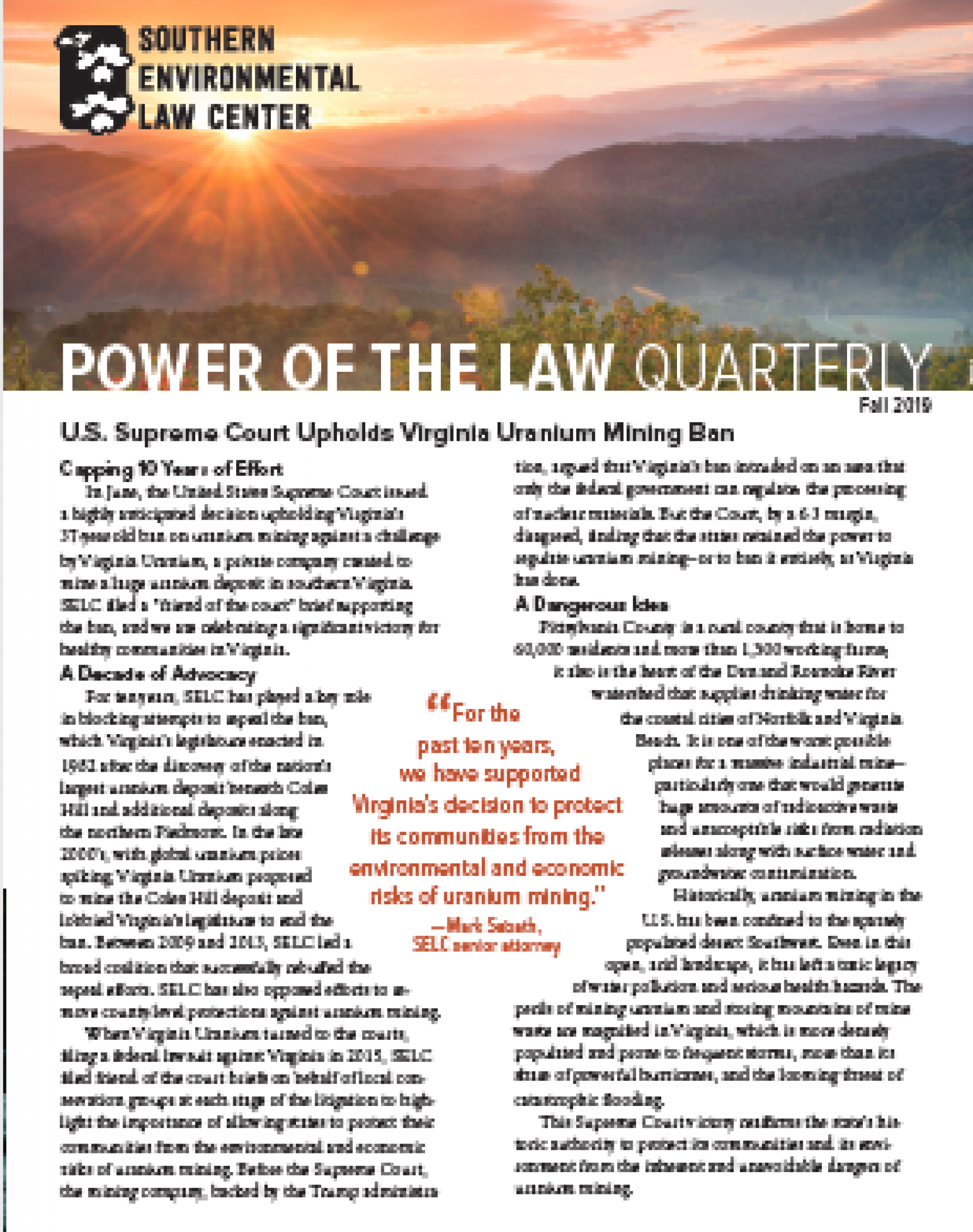Fall News, 2019
Our print newsletter has hit mailboxes every season for more than three decades. Now, to make it easily accessible for all, we're also presenting these stories online. Browse the lastest SELC news, compiled for our Fall 2019 newsletter, below.
Maxine Ruling Could Mean Cleanup for Abandoned Mines across Alabama
SELC delivered a significant victory for water quality in Alabama when a federal court in May ruled that toxic pollution from an abandoned coal mine outside Birmingham violates the Clean Water Act. The Drummond Company will now be held accountable for millions of cubic yards of acid mine drainage polluting the Locust Fork of the Black Warrior River at the company’s defunct Maxine Mine.
Alabama has hundreds of shuttered coal mines like this one, where companies just closed up shop and walked away from active sources of pollution. In 2016, SELC filed a federal lawsuit to address Maxine. Central to our case was demonstrating clearly the underground flow of toxic contamination from this mine, which extended 13 miles beneath the Locust Fork. Our team took seven days to survey the site with advanced geophysical sensing and remote imaging equipment to map groundwater pollution plumes and surface water contamination.
These innovative efforts paid off—Drummond will now have to stop its illegal pollution. As we press forward to ensure full cleanup at Maxine, this court victory also sets an important precedent for other abandoned mine sites in Alabama, for the first time bringing them under the jurisdiction of the Clean Water Act.
©Robert Llewellyn
Supreme Court Upholds Virginia Uranium Mining Ban
In June, the United States Supreme Court issued a highly anticipated decision upholding Virginia’s 37-year-old ban on uranium mining against a challenge by Virginia Uranium, a private company created to mine a large uranium deposit in southern Virginia. SELC filed a “friend of the court” brief supporting the ban, and we are celebrating a significant victory for healthy communities in Virginia.
Click here to view the print version of SELC's fall newsletter. 
A Decade of Advocacy
For ten years, SELC has played a key role in blocking attempts to repeal the ban, which Virginia’s legislature enacted in 1982 after the discovery of the nation’s largest uranium deposit beneath Coles Hill and additional deposits along the northern Piedmont. In the late 2000’s, with global uranium prices spiking, Virginia Uranium proposed to mine the Coles Hill deposit and lobbied Virginia’s legislature to end the ban. Between 2009 and 2013, SELC led a broad coalition that successfully rebuffed the repeal efforts. SELC has also opposed efforts to remove county-level protections against uranium mining.
When Virginia Uranium turned to the courts, filing a federal lawsuit against Virginia in 2015, SELC filed friend of the court briefs on behalf of local conservation groups at each stage of the litigation to highlight the importance of allowing states to protect their communities from the environmental and economic risks of uranium mining. Before the Supreme Court, the mining company, backed by the Trump administration, argued that Virginia’s ban intruded on an area that only the federal government can regulate: the processing of nuclear materials. But the Court, by a 6-3 margin, disagreed, finding that the states retained the power to regulate uranium mining—or to ban it entirely, as Virginia has done.
A Dangerous Idea
Pittsylvania County is a rural county that is home to 60,000 residents and more than 1,300 working farms; it also is the heart of the Dan and Roanoke River watershed that supplies drinking water for the coastal cities of Norfolk and Virginia Beach. It is one of the worst possible places for a massive industrial mine—particularly one that would generate huge amounts of radioactive waste and unacceptable risks from radiation releases along with surface water and groundwater contamination.
Historically, uranium mining in the U.S. has been confined to the sparsely populated desert Southwest. Even in this open, arid landscape, it has left a toxic legacy of water pollution and serious health hazards. The perils of mining uranium and storing mountains of mine waste are magnified in Virginia, which is more densely populated and prone to frequent storms, more than its share of powerful hurricanes, and the looming threat of catastrophic flooding.
This Supreme Court victory reaffirms the state’s historic authority to protect its communities and its environment from the inherent and unavoidable dangers of uranium mining.
Additional newsletter headlines:
- Another Court Victory Blocks Atlantic Coast Pipeline
- SELC Tackles Georgia's Coal Ash Pollution
- Unprecedented Victory in North Carolina Transportation Case
- Defending the Okefenokee Swamp
- Sun Shines on Georgia Solar
- Settlement Brings Justice for West Badin
- Trump Administration Plays Politics with Endangered Species
- SELC Defends Public Participation in National Forest Decisions
